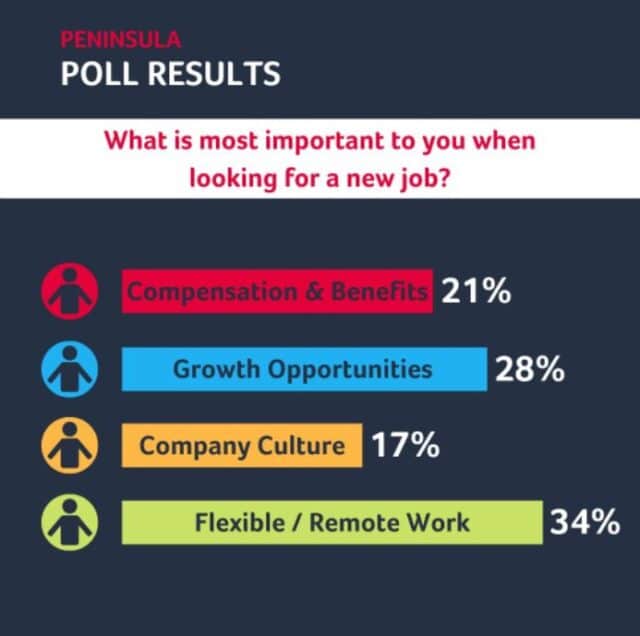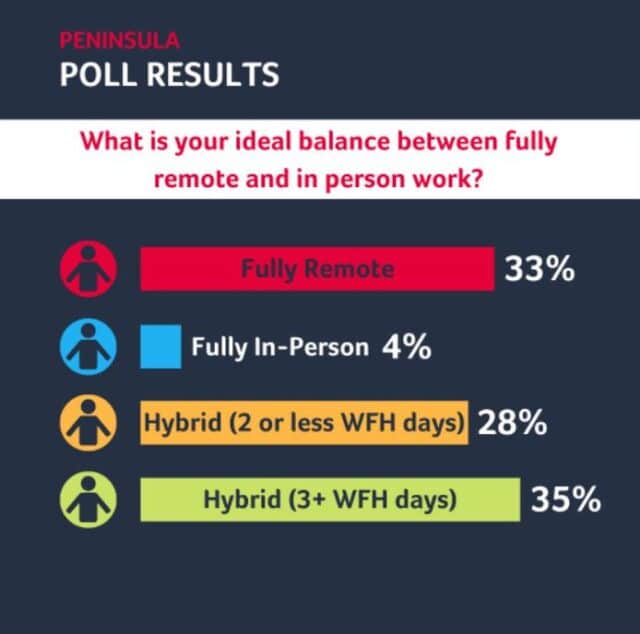One of the biggest ways the pandemic has impacted our lives is the speedy transition to remote work. More and more employers are now offering remote or flexible working as a perk to attract and retain talent.
While this may be a smart HR strategy, remote work may not be ideal for all workplaces. The nature of your small business largely determines whether remote work is beneficial for your company in the long-term. If you’re in sales or accounting, transitioning to permanent work-from-home would be much easier than say if you were running a watch & jewelery repair business or a dental clinic.
Working out of a virtual office has some obvious benefits, the topmost being saving time and money. It is also a perk that most employees seek. Employees surveyed by the 2021 Hays Salary Guide listed the option to work from home as one of their “most desired benefits”.
For those on the fence about switching to remote work permanently, a hybrid work model may seem more appealing. Two social media surveys conducted by Peninsula found that flexible/remote was a top benefit sought by most employees (34%) when looking for a new job.

When asked to pick their ideal balance between fully remote and in-person work, 63% respondents chose hybrid work.

It is important that you consider the specific needs of your business before choosing either of these work models. In this blog, we provide the benefits and challenges each work model entails and answer some common questions employers may have.
Remote Work Model
What are the benefits of a permanent work-from-home arrangement?
There are several advantages of a fully remote office:
- It is more cost efficient as it helps employers save overhead costs, such as rent, utilities, office equipment, kitchen supplies, etc.
- It saves time spent commuting and getting ready for work.
- It helps your staff maintain a work-life balance. Employees who are satisfied with their jobs are productive and more likely to stay on with a company.
- It helps employers broaden their talent pool and hire qualified candidates from across the country.
- It is also good for the environment. It eliminates the daily waste created in a physical office and reduces carbon emissions as employees no longer drive to work.
All these benefits also mean less stress for you and more success for your small business.
What are the challenges of running a fully remote office?
The most important thing to consider is whether permanent remote work is viable for your business. You may need to:
Restructure roles and workflow processes
In terms of productivity, the work-from-home arrangement may have worked out well during the lockdowns. But a permanent switch may require you to review and restructure certain roles and workflow processes. Get feedback from your staff and find out what has and hasn’t worked in the past two years.
Update company policies
You’d also need to update policies on remote work and remote workplace health and safety.
Factor in transitional costs
You’ll need to invest more in your company’s technological infrastructure and provide your employees with the equipment they need to work efficiently from home. You may also need to hire more IT staff to support your remote team.
Check-in with your staff
Keep in mind that not all your employees may want to work from home indefinitely. For those who live alone, a virtual office may be isolating and may affect their mental health in the long-term. Others may prefer the structure that going to a workplace provides to their daily routine.
How do you keep employees accountable when they are working from home?
Though time theft is a common concern, it is fairly simple to track employee productivity in a remote office:
- Consider how you measured efficiency in the pre-pandemic physical office and apply the same parameters to the virtual office.
- Set clear expectations on goals and deadlines.
- Create a remote work policy that lays down rules on attendance, breaks, team meetings, and the consequences of time theft.
- Switch to a cloud-based HR management software, such as BrightHR, to mark attendance, track employee hours, location and number of breaks taken.
For more information, read our blog on preventing time theft in the remote workplace.
What are an employer’s obligations when it comes to health & safety of remote staff?
Under the Occupational Health & Safety law, it is the employer’s general duty to take all reasonable precautions for the health and safety of the employees in the workplace. This includes the remote workplace.
Here are some good practices to ensure the home office set up of your employees is hazard-free:
- Create a home office safety checklist. Ask your staff to fill it out and return it to you.
- Provide staff with ergonomic equipment (desks, chairs, monitors, etc.,) if needed, to reduce risk of musculoskeletal injuries.
- Make it clear in your remote work policy that all company policies continue to apply to employees working from home. These should include policies on bullying and harassment, workplace violence, and drug & alcohol use.
- Conduct regular check-ins with employees.
- Remind staff about your company’s Employee Assistance Program and what services are available to them.
- Have a protocol in place to support staff at risk of domestic violence.
- Consider developing a Working Alone or in Isolation Policy for cases where an employee may be working out of a home space where immediate emergency aid is unavailable. Identify and address possible home office hazards and set up a regular check-in schedule.
Hybrid Work Model
If neither fully remote nor a traditional office works for your business needs, you may want to consider a hybrid work arrangement that blends both. In a hybrid work model, your staff splits their work week between working from the home and the office.
What is the difference between flexible working and hybrid working?
Flexible work can include flexibility related to working hours, work location, working part-time, etc. Hybrid work, on the other hand, is a type of flexible work that allows flexibility only in terms of the work location.
What are the advantages of a hybrid workplace?
A hybrid workplace provides the benefits of both a remote and physical office. It:
- Boosts staff productivity as employees are freed from the hassle of daily commutes and enjoy greater flexibility in managing their time and daily routines.
- Increases employee retention as offering this “most desired benefit” (Hays Survey 2021) gives you an edge over your competitors.
- Offsets the isolating nature of remote work by allowing for weekly team collaboration and bonding.
- Improves employee well-being and mental health.
- Allows you to better support and accommodate staff with caregiving responsibilities or a disability.
What are the challenges of switching to a hybrid work model?
All the challenges related to going fully remote (as discussed above) would also apply to the hybrid workplace as it combines both remote and in-office working.
Employers choosing a hybrid work model will have to maintain an office space and also invest in remote collaboration software. You’ll have to invest in work equipment and gadgets (laptops, headsets, keyboard, monitors, etc.) for the home offices of your remote staff. You’d also need to create a hybrid work policy and review workflow processes for hybrid working.
If you are allowing employees to pick their days in office, collaboration may also be a challenge with half of your team in-office and half working remotely. Employees may plan and come into work on the same days as their friends, leading to creation of workplace cliques that are bad for your work culture.
You can address these challenges in your hybrid work policy. Your policy should clarify when employees are required to work from office and when from home. It should also make it clear whether your staff can choose the days they come into office.
If you’d like to give your employees the freedom to pick the days they can come into work, set aside one day a week when everyone is required to work from office so that your team can interact and get to know each other.
Need help developing HR policies for your workplace?
Our experts can assist you with company policies and with any other human resource management, health & safety, or employment advice you may need. To learn more about how our services can benefit your business, call us today at 1 (833) 247-3652.




